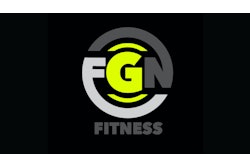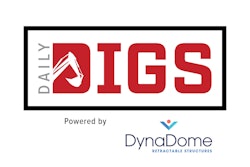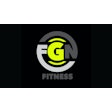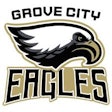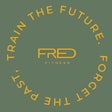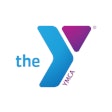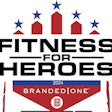Creating and maintaining the right image for your fitness center can help you to retain members and successfully reach new ones.
If you think you don't have a brand, think again. If you are a manager or an owner of a fitness center, large or small, you have a brand. But is it working for you to help gain and retain members?
What exactly is a brand?
Your brand is not your logo, the colors in it or your motto. Simply stated, your brand is what people say about you - especially when you are not around. Too often, conversation about branding revolves around creating a brand name and a logo. True, these help create visibility and make you a recognized identity; however, ad copy and marketing jargon may be catchy, creative and edgy, but not at all tied to your values and beliefs. What if, rather than creating a brand, you actually focused on discovering the brand you already have, and then focus on making your business, services and products align with that?Fitness is an emotional and personal decision. For your members, it's stress relief or heart disease prevention or better self-esteem. Advertising on this same personal level can help you to reach more customers. Lesley Everett, personal branding expert and international speaker from the United Kingdom, says providing clients an emotional link back to your brand can be highly effective when it comes to building brand loyalty.
"If your clients get what they expect from you and your company, then you have built trust with them - which, in turn, gets repeat business," Everett says. This methodology of branding is much more personal and genuine than superficial image development. Quite simply, Everett says, you and your staff members are the brand every time you communicate with members and the outside world. From voice mail messages to face-to-face greetings, every communication you and your staff members have with the outside world adds a layer to your personal brand and that of your company.
Creating a brand
Michael Port, in Book Yourself Solid, describes creating a branding statement as a two-step process. First, develop the "who and what you do statement," which assumes you know who your target market is and what it is you do to help them. Step two, the "why you do it statement," is the component that connects them to you. Why have you dedicated your life's work to what you do? Imagine you made your branding statement to someone, and they challenged you with "and why would I hire you to do that?" Whatever it is that you would blurt out in response, that's your answer to the "why you do what you do." If you've been delivering your elevator speech on prospective clients and getting nowhere, you haven't added this emotional connection.Do your image and brand match?
You are attracting people to you in the form of clients, members and employees. Examine who you are attracting. Are they a good fit for your facility? Are you working easily with people? If your brand message is authentically "you and what you do," there is a stronger chance that you will attract the kinds of people who you want to work both for and with.Many people can gain the knowledge, education and financial resources to copy what you do, but they can't copy you. Without the uniqueness that sets you apart, you are not necessarily doomed to fail, but you are not set up to reach your potential.
Port proposes that a personal brand will do two things for you. It will 1) clearly and consistently define, express and communicate who you are, who you serve, and why you have chosen to dedicate your life and work to serving your target market; and 2) help you attract your most ideal clients and repel those who are less than ideal. Most of all, Port says that your true brand distinguishes what you do and who you are uniquely from anyone else.
Determining Your Facility's BrandBy Lesley EverettAssess your business. Choose from the words below or select a new list, as the options are unlimited. Select three to four from the list that are the best fit for your business. Ask others to assess your business. Ask colleagues, supervisors, employees and significant others to choose words that describe your business.
Do you see your fitness center as others do? Do you portray the same genuine self in your business life that you do personally? Does your image branding match this brand based on your values and behaviors? How could a change in your brand image enhance your success in business? Lesley Everett is an international speaker and personal branding expert. She can be reached at www.lesleyeverett.com. |
||||||
Advertising your brand
Authors B.J. Pine and J.H. Gilmore, in The Experience Economy, support the idea that creating a brand is no longer enough. A brand must emphasize the experience customers have surrounding the use of your services or facilities. You may, then, choose to advertise emphasizing moments in someone's life enhanced by health and fitness, rather than the amenities of your facility. Parents playing with their children, a mature gentleman finishing a race or a grandfather holding a new born grandchild are experiences you may choose to illustrate in your advertising, depending on your brand.If you specialize in sports training, your moments will be different. If you cater to business people, you might show a relaxed, de-stressing, post-exercise sauna visit, or a husband and wife meeting up in the lobby following exercise. If you're the quick-stop, convenient answer to fitness, you might show the working dad flying out of his suit and tie and, minutes later, jumping back into the car to make it to the soccer match.
Staff members are key
Your branding challenge is twofold: First, define the brand that is you. Then, train your employees so that you are branding your service - in other words, branding people and their behavior. Create an image that supports your brand, rather than an image that is superficial. Does it speak to you? Are you authentically represented in your brand? Everett branded herself with, "Walking Tall, the Personal Branding Company." She uses a giraffe in her logo to visually illustrate her message of standing out in a crowd. The image works well for her, and she also happens to love giraffes.To get employees emotionally invested in your business, train them in a way that they see their own personal effect on the facility. Success begins with recruitment, and ensuring that every staff member clearly understands and buys into your vision and mission. Enable individuals to develop their authentic personal brand in line with the corporate message. Find each employee's strengths and maximize them, for example. This, Everett says, is key to maximizing your brand, and to retaining the clients and members who you've gained from it.



















